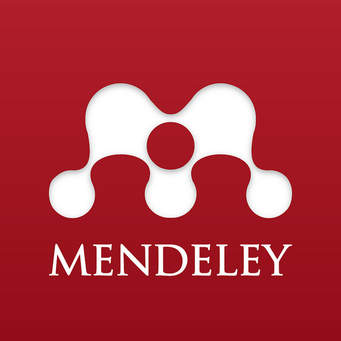Daya Terima Konsumen Dan Kandungan Gizi Tempe Kacang Tunggak Rumput Laut
Abstract
Background. Tempe is a very popular food product in Indonesia which is processed with soy fermentation process in a certain time using Rhizopus sp. Shell that grows on soybeans will hydrolyze complex compounds into simple compounds that are easily digested by humans. In general, tempe has white characteristics due to the growth of mycelia-mycelia fungus that connects between soybean seeds to form a compact texture. The occurrence of degradation of soybean components during the fermentation that caused the emergence of a typical the cowpea producers seaweed flavor (Vigna unguiculata) is one type of nuts are well known and growing in Indonesia. The superiority of cowpea is easy to cultivate, contains high enough protein and the price is relatively affordable compared to soybeans. To verify the food, other mineral-rich foods can be added: Seaweed. This study aims to determine the capacity of grass beans in seaweed in Perumnas Market.
Research Purposes. This research uses experimental method with laboratory experiment, Completely Random Design (RAL) one factorial that is addition of seaweed.
Research Methods. Samples in this research is consumer panelist as much as 42 people. The data collected in the form of the identity data of the sample which includes age, sex, fondness to tempe cowpea seaweed. Of 42 consumer panelists there were 28 (67%) liked respondents and 14 (33%) respondents rather like marketing cow seaweed cowpea. Consumer panelist respondents were 23 persons (55%) and kos-kossan children (19%) (45%) .The organoleptic test data was analyzed using Analysis Of Variance (One Way Anova). At a 95% confidence level or α 0.05.
Research Result. The results show that in terms of taste, texture, odor and color of treatment t1 is most favored by somewhat trained panelists. Conclusion that exists For color parameters, odors, flavors and textures have a value of p <0.05. This shows that the ratio of cowpea and seaweed has a significant influence on the color, smell, taste and texture of The cowpea producers seaweed.
Keywords
Full Text:
PDFReferences
Anonim. 2008 . Tanpa Kedelai Tetap Bisa Makan Tempe.Warta Penelitian dan Pengembangan Pertanian Vol. 30, No. 1 2008
Anonim. 2012. Laporan Penelitian Dana PNBP 2012
Astawan, Made.2008. Sehat dengan Tempe. Penerbit Dian Rakyat. Bogor
Badan Standardisasi Nasional. 2012. Tempe Persembahan Indonesia untuk Dunia . BADAN STANDARDISASI NASIONAL JAKARTA
Estiningtyas, Dian. 2014. Kandungan Gizi Sosis Subtitusi Tepung Tempe dengan Bahan Pengisi Tepung Ubi Jalar Kuning ( Ipomea Batatas ) dan Bahan Penstabil Ekstrak Rumput Laut ( Eucheuma Cottonii ) untuk PMT Ibu Hamil. Artikel Penelitian. Program Studi Ilmu Gizi Fakultas Kedokteran Universitas Dipenogoro Semarang.
Haliza, Winda. Purwani, E.Y dan Thahir,Ridwan. 2007. Pemanfaatan Kacang-Kacangan Lokal Sebagai Substitusi Bahan Baku Tempe Dan Tahu. Balai Besar Penelitian dan Pengembangan Pascapanen Pertanian.
Listyana , Dina. 2014. Subtitusi Tepung Rumput Laut (Eucheuma Cottonii) Pada Pembuatan Ekado Sebagai Alternatif Makanan Tinggi Yodium Pada Anak Sekolah. Skripsi . Jurusan Ilmu Kesehatan Masyarakat Fakultas Ilmu Keolahragaan Universitas Negeri Semarang.
Mahmud , Mien K et all. 2009. Tabel Komposisi Pangan Indonesia. Gramedia.Jakarta
Peranginaangin,R.2013. Memproduksi Karanginan dari Rumput Laut. Penebar Swadaya. Jakarta
Rauf, Rusdin. 2015. Kimia Pangan . Penerbit Andi .Yogyakarta.
Winarno, F.G.2004. Kimia Pangan Dan Gizi. Gramedia Pustaka Utama. Jakarta
[SNI] Standar Nasional Indonesia,1992.Cara Uji Makanan dan Minuman . SNI 01-1891-1992 . Badan Standar Nasional.
Tjiptono, Fandy.2008. Strategi Pemasaran .ANDI. Yogyakarta
DOI: https://doi.org/10.32807/jgp.v2i2.94
Refbacks
- There are currently no refbacks.
Copyright (c) 2019 Jurnal Gizi Prima

This work is licensed under a Creative Commons Attribution-ShareAlike 4.0 International License.
Address:
Jurnal Gizi Prima (Prime Nutrition Journal) 2656-2480 Kampus A Poltekkes Kemenkes Mataram, Jurusan Gizi, Jl. Praburangkasari Dasan Cermen Sandubaya Mataram.


